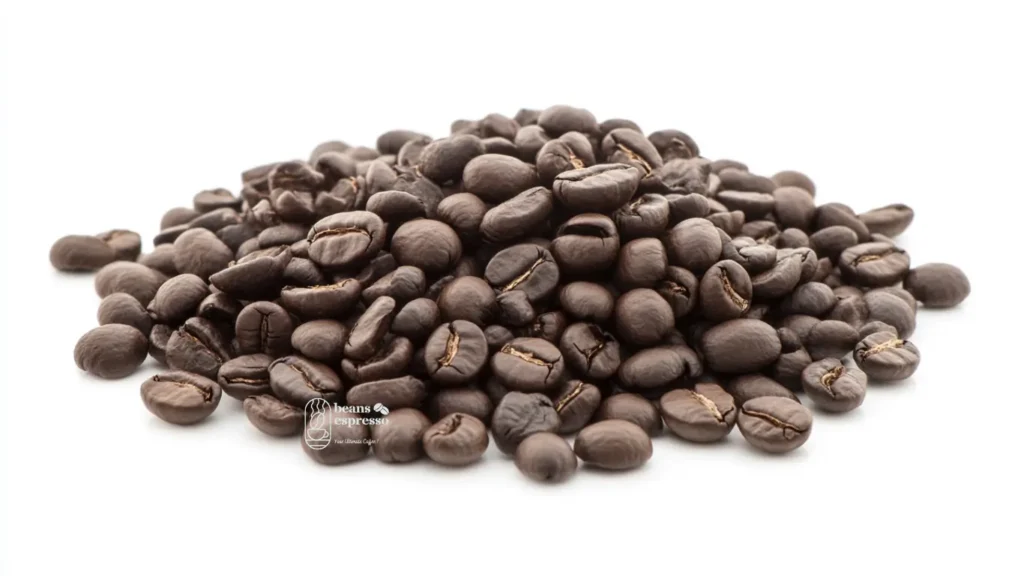Coffee is more than just a morning ritual; it’s an experience, a culture, and for some, an art. Whether you’re a budding coffee enthusiast or a seasoned aficionado, understanding coffee beans—their origins, types, and how to prepare them—can elevate your coffee game. In this guide, we’ll explore everything you need to know about coffee beans, from farm to cup. By the end, you’ll have the tools and knowledge to brew the perfect cup of coffee at home and have this Full Coffee Beans Guide in your hands.
What Are Coffee Beans?
Coffee beans aren’t beans at all—they’re seeds found inside coffee cherries. These cherries are the fruit of the Coffea plant, native to regions along the equatorial belt. The two most commonly cultivated species are Coffea arabica (Arabica) and Coffea canephora (Robusta).
Interestingly, the journey of coffee as we know it began in Ethiopia, where legend has it a goat herder named Kaldi discovered the energizing effects of coffee after his goats ate the cherries. Today, coffee is cultivated across Africa, South America, and Asia, each region imparting unique flavors to the beans.
Discover in the next section a complete Coffee Beans Guide.
Types of Coffee Beans: A Quick Overview
When selecting coffee beans, understanding the types available can guide your choice. Here’s a breakdown:
- Arabica: Known for its smooth flavor and subtle acidity, Arabica beans are often grown at higher altitudes. They dominate the specialty coffee market but are more sensitive to pests and weather.
- Robusta: With a stronger, bitter profile and higher caffeine content, Robusta beans are often used in espresso blends. They’re hardier plants, making them cheaper to cultivate.
- Liberica: Rare and bold, Liberica beans have a distinct smoky flavor. They’re popular in certain regions like the Philippines.
- Excelsa: A subtype of Liberica, these beans are known for their tart, fruity flavors.
For a deeper dive into the differences, check out this comprehensive coffee bean guide.
How Coffee Beans Are Grown and Harvested
The flavor of your coffee starts at the farm. Coffee thrives in tropical climates with rich soil and consistent rainfall. Here’s a glimpse into the process:
- Planting: Seeds are carefully planted in shaded nurseries.
- Harvesting: Once the cherries ripen, they are either hand-picked or machine-harvested. Hand-picking ensures only the ripest cherries are collected, contributing to superior quality.
- Processing:
- Wet (Washed) Processing: Cherries are pulped and fermented, resulting in clean, bright flavors.
- Dry (Natural) Processing: Cherries are sun-dried, imparting fruity, wine-like notes.
- Honey Processing: A hybrid of wet and dry methods, yielding a balanced flavor profile.
The choice of processing method significantly affects the taste of your coffee, as described in this roasting guide.
Choosing the Best Coffee Beans
Selecting the perfect coffee bean depends on your taste preferences and brewing method. Consider these factors:
- Freshness: Always check the roast date. Coffee is best consumed within 2-4 weeks of roasting.
- Origin: Single-origin coffees offer distinct flavor profiles, while blends combine beans for a balanced taste.
- Roast Level: Light roasts highlight the bean’s natural characteristics, while dark roasts provide a richer, more robust flavor.
- Certifications: Look for organic, Fair Trade, or Rainforest Alliance labels to ensure ethical and sustainable practices.
Understanding Roast Levels
The roast level of a coffee bean can dramatically change its flavor. Here’s a quick guide:
- Light Roast: Bright, acidic, and fruity; retains most of the bean’s original flavors.
- Medium Roast: Balanced with moderate acidity and sweetness.
- Dark Roast: Bold, smoky, and less acidic, with a heavier body.
Pro tip: Choose your roast level based on your brewing method. For instance, light roasts work well for pour-over, while dark roasts shine in espresso machines.
Learn more about Coffee Beans Guide For Brewing
Proper Storage: Keeping Coffee Beans Fresh
Storing your coffee beans correctly ensures maximum freshness. Follow these tips:
- Use an airtight container, away from heat, light, and moisture.
- Avoid storing beans in the fridge or freezer unless necessary.
- Grind your beans just before brewing to retain their aroma and flavor.
Grinding Coffee Beans: Why It Matters
The grind size impacts the extraction process during brewing. Match your grind size to your brewing method:
- Coarse Grind: Ideal for French press and cold brew.
- Medium Grind: Best for drip coffee makers.
- Fine Grind: Perfect for espresso machines.
Invest in a burr grinder for consistent results, as uneven grinds can lead to under- or over-extracted coffee.
Brewing Coffee Beans: Tips for Perfection
Brewing great coffee is both an art and a science. Here’s a step-by-step guide for popular methods:
- Pour-Over: Highlight nuanced flavors with this method. Use a gooseneck kettle for precise pouring.
- French Press: Perfect for a full-bodied cup. Steep the coffee for 4-5 minutes and press slowly.
- Espresso: Achieve a bold, concentrated shot by using a fine grind and high pressure.
- Cold Brew: Combine coarse-ground coffee with cold water and steep for 12-24 hours for a smooth, refreshing drink.
FAQs About Coffee Beans Guide
How long do coffee beans stay fresh?
Coffee beans retain peak freshness for about 2-4 weeks post-roast. Store them properly to extend their life.
Can I freeze coffee beans?
While freezing can preserve beans long-term, frequent temperature changes may degrade their quality. Freeze only if you won’t use them soon.
What’s the difference between coffee grounds and beans?
Coffee beans are whole and need grinding before brewing. Grounds are pre-ground and convenient but lose freshness faster
Final Thoughts
Mastering the art of selecting, storing, and brewing coffee beans unlocks a world of flavors and aromas. Whether you’re sipping on a fruity light roast or indulging in a bold espresso, understanding the journey from bean to cup makes every sip more meaningful.
What’s your favorite type of coffee bean and brewing method? Share your thoughts in the comments below about Coffee Beans Guide



